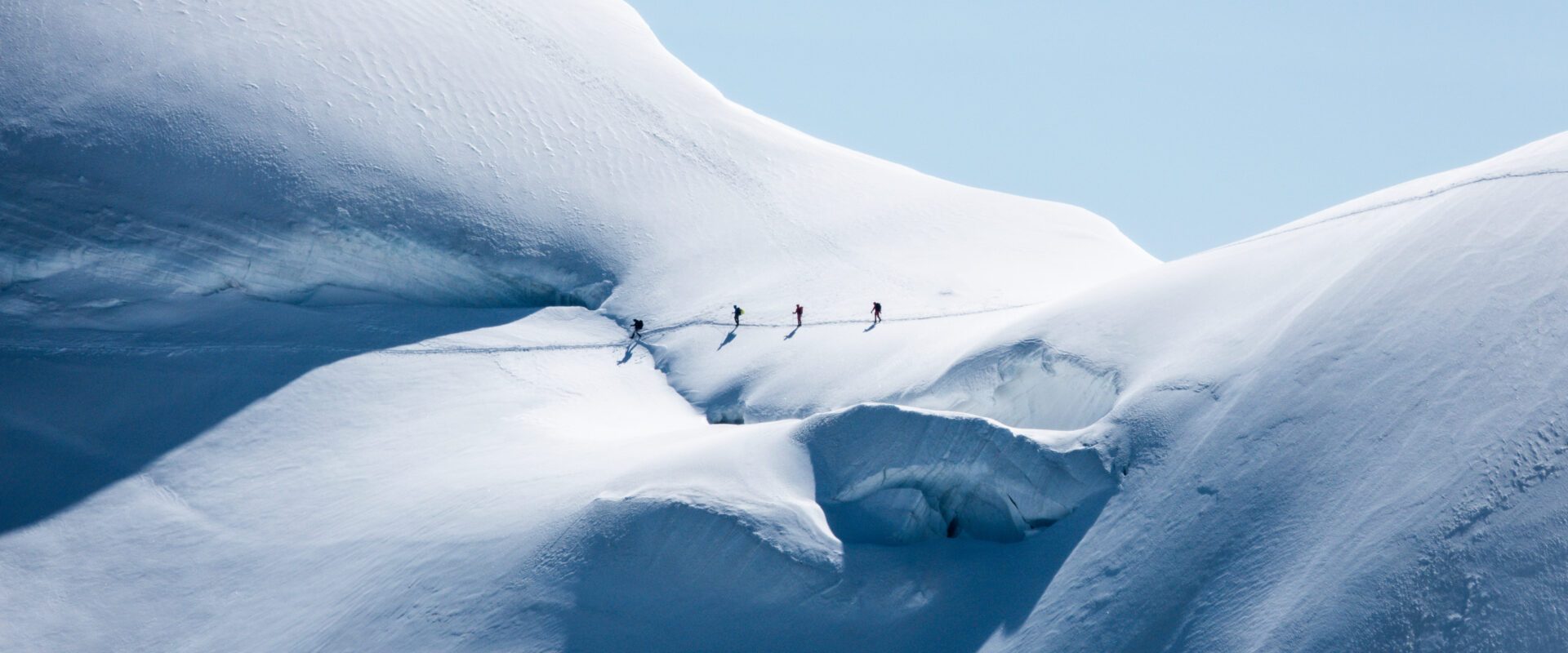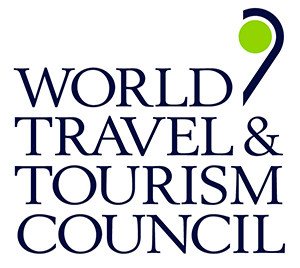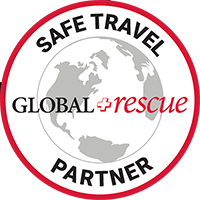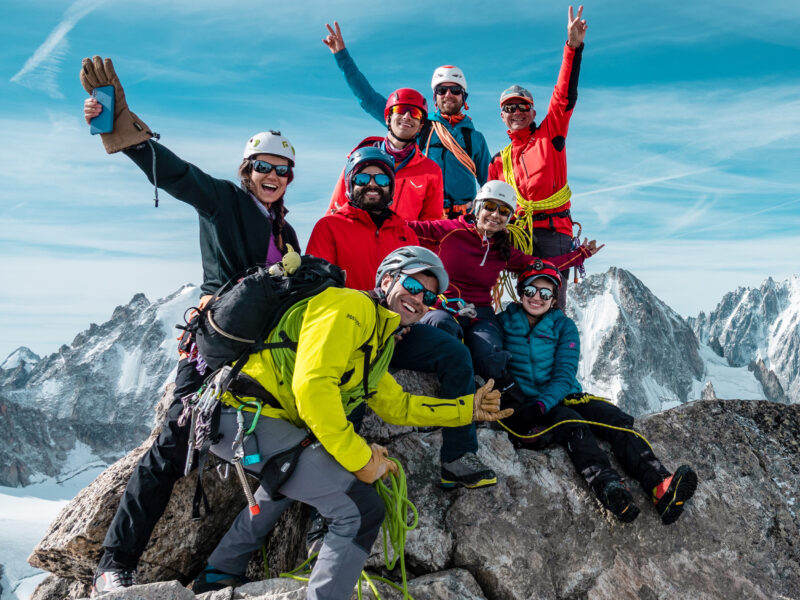BY Rami Rasamny | February 17 2025
Training at Altitude to Prepare for Mont Blanc

Climbing Mont Blanc requires more than just physical fitness; it demands proper acclimatization to high altitude. Training at altitude before attempting the Mont Blanc summit improves endurance, reduces the risk of altitude sickness, and ensures a safer, more enjoyable climb.
Why Altitude Training Matters
Mont Blanc’s summit stands at 4,809 meters (15,777 feet), where oxygen levels are significantly lower than at sea level. Without prior exposure, climbers may experience acute mountain sickness (AMS), including headaches, nausea, dizziness, and fatigue. Gradual acclimatization helps the body adapt to lower oxygen levels, improving overall performance and reducing health risks during the Mont Blanc ascent.
Altitude Training as Part of the Mont Blanc Summit Course
Our Mont Blanc summit course includes altitude training to ensure climbers are well-prepared:
- Nights Above 3,500 Meters – Overnight stays at high-altitude refuges help the body adjust to lower oxygen levels.
- Two High-Altitude Summits Before Mont Blanc – These climbs prepare climbers physically and mentally for the final ascent, increasing their chances of success and minimizing health risks.
The Benefits of Prior Altitude Experience
While technical experience is not mandatory for Mont Blanc, prior exposure to high-altitude conditions is highly beneficial. Climbers who have summited peaks such as Kilimanjaro (5,895m) or other non-technical high-altitude mountains gain valuable insight into their body’s response to altitude. This experience helps climbers handle the Mont Blanc climb difficulty and the physical challenges of the Mont Blanc ascent more effectively.
The Best Ways to Prepare for Altitude
We believe real-world exposure is the best way to acclimatize. Rather than using altitude tents, masks, or hypoxic training—which do not accurately simulate real conditions and are costly—investing time at altitude is the best approach. Consider these strategies:
- Arriving Early – Spending extra days at altitude before your Mont Blanc climb allows for gradual acclimatization, increasing your chances of successfully summiting Mont Blanc. A great way to start is by taking the Aiguille du Midi cable car or the Brévent cable car and spending the day at altitude. These locations provide excellent exposure to the conditions you will face during the Mont Blanc summit hike.
- Training in High-Altitude Environments – If possible, hike or trek in mountain regions above 2,500m to 3,500m to gain altitude experience and prepare for the Mont Blanc summit hike.
- Acclimatization Trips – Prior trips to the Alps, Andes, or Himalayas provide valuable exposure to high-altitude environments and help condition the body for climbing Mont Blanc.
Final Thoughts
Altitude acclimatization is essential for a successful Mont Blanc summit attempt. By integrating high-altitude exposure into the training course and encouraging prior experience, we set climbers up for success. Whether through early arrival or dedicated acclimatization trips, investing in real altitude exposure is the best way to safely and confidently reach the top of Mont Blanc. When considering how difficult it is to climb Mont Blanc, proper acclimatization plays a crucial role in ensuring a successful and enjoyable ascent.
About The Author
Rami Rasamny is the founder of Life Happens Outdoors, a premium adventure travel community dedicated to transforming lives through curated outdoor experiences. A mountaineer and entrepreneur, Rami has led teams on some of the world’s most challenging peaks, from the Alps to the Himalayas. His mission is to make adventure accessible, transformative, and safe for all who seek to push their limits and Come Back Different.
About Life Happens Outdoors
At Life Happens Outdoors, we believe in the power of nature to transform lives. As proud members of the Adventure Travel Trade Association (ATTA) and the World Travel & Tourism Council (WTTC), our team of certified guides and outdoor professionals is committed to the highest standards of safety, sustainability, and excellence.
Discover more about our story and mission on our Meet LHO page, or explore our curated adventures such as the Tour du Mont Blanc Trek, the Climb of Kilimanjaro, and Chasing the Northern Lights.














